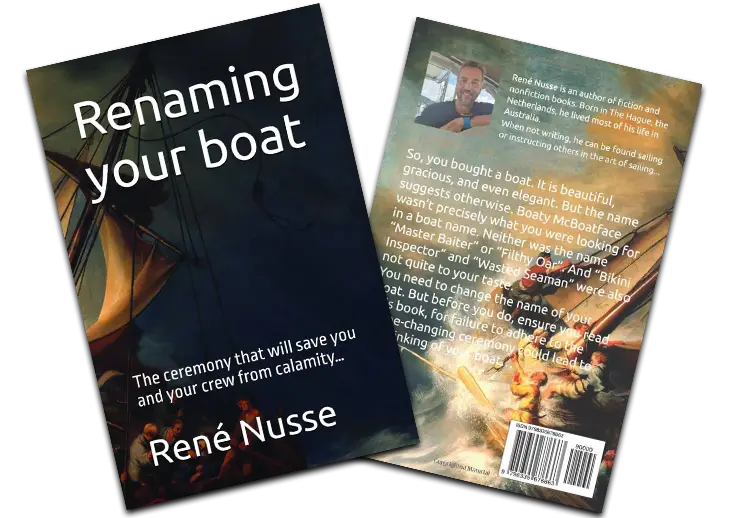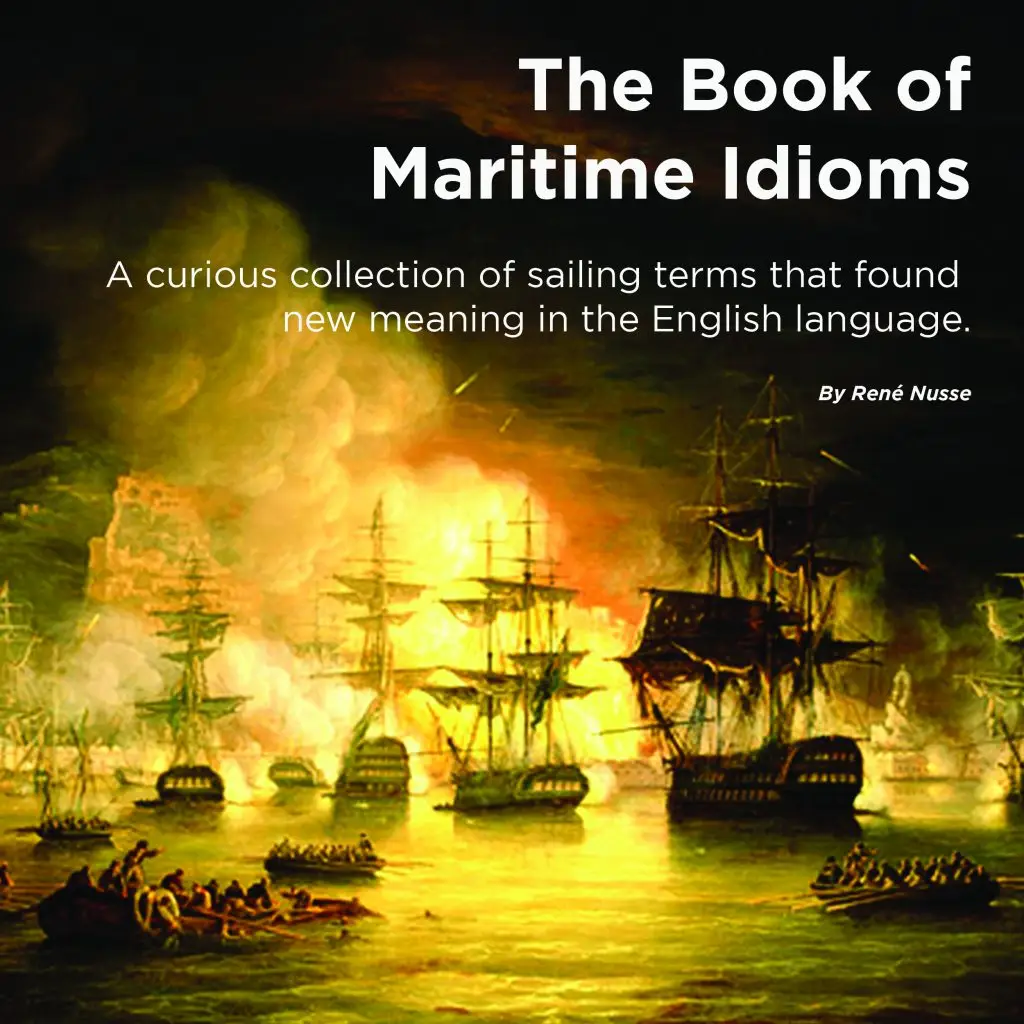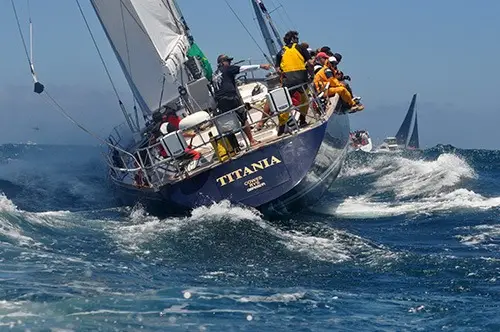
Your actions have a purpose. You act decisively and without fear. You are also a planner who will mitigate any possible danger. Life jackets for your crew are one of those things you refuse to compromise on; you are, after all, their skipper.

NAVIGATION RULES CLINIC + BASIC SAIL TRIM COURSE
Let’s talk about life jackets or PFDs…
Before delving into the nitty-gritty of life jackets or Personal Flotation Devices (PFDs), let me say: Get a device you are willing to wear! It is the same with protective gear on a motorbike. If you go for the bulky, cheaper gear based on a “that will cover any event” attitude, you will probably not wear the device the day you need it most; it will be stowed in your locker while you are facedown floating in the water.
Okay, let’s move on from that somewhat sobering thought. In terms of terminology, a PFD is an umbrella term that denotes anything that will keep you afloat. This can include a life jacket and other devices such as floating rings or a pool noodle.
When we talk about life jackets or PFDs, we talk about important devices. Naturally, “important” is subjective, so legislators commissioned ratings or standards for PFDs within numerous jurisdictions. This includes international legislation down to the state level. Hell, the ACT even has legislation covering life jackets! As a general rule, the more localised standards trump the more comprehensive standards, so could you make sure what your local state or territory says about using PFDs is correct? Local jurisdictions often adopt internationally recognised standards, but not always and almost always not 100%.
Here is a list of “some” of the standards:
 International Standards – ISO
International Standards – ISO
ISO (International Organization for Standardization) is a global standards organisation that has created international standards for life jackets. A jacket that is compliant with ISO standards will be marked with “ISO” on the vest and the standard type. An ISO-compliant jacket does not make it compliant at your local level unless the local jurisdiction refers to ISO as such.
 European Standards (EN) – CE
European Standards (EN) – CE
The European Standards (EN) define the CE standard, which is accepted by the European Union and the European Free Trade Association. More than 30 member European nations recognise CE compliance. If the vest is compliant, it will be marked with “CE” on the vest and the standard type. A CE-compliant jacket does not make the vest compliant at your local level unless the local jurisdiction refers to CE as such.
ISO & CE Types
By a minor miracle, both ISO and CE types have identical buoyancy classifications.
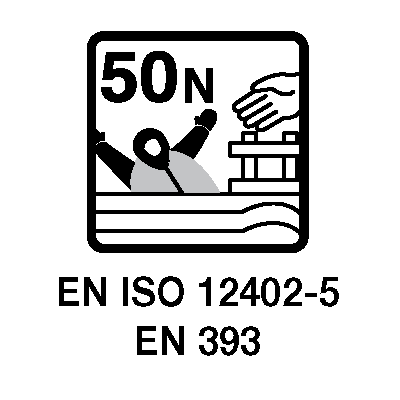
50N – Buoyancy Aid
It is intended for competent swimmers in sheltered water where help is nearby. It only provides support to conscious individuals who can help themselves. 50N buoyancy aids are a flotation aid only, offering 50 Newtons of flotation.
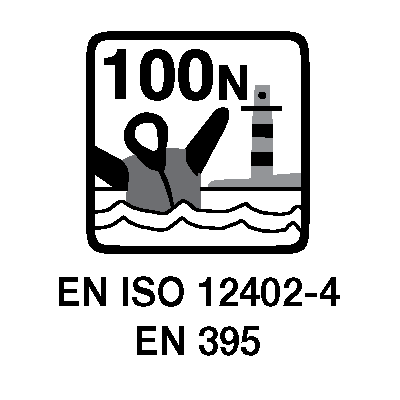
100N – Life Jacket
It is intended for swimmers and non-swimmers in calm, inshore waters. 100N life jackets give fair assurance of safety from drowning in relatively calm waters. It is not guaranteed to self-right an unconscious person and should not be expected to protect the airway of an unconscious person in rough water. 100N life jackets offer 100 Newtons of flotation.
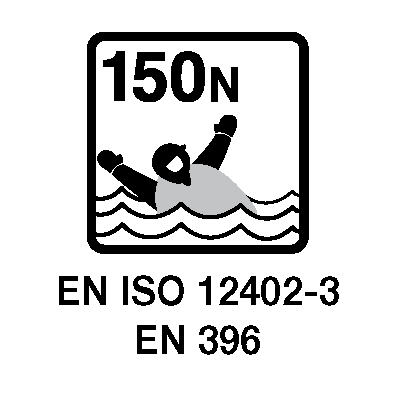
150N – Life Jacket
For swimmers and non-swimmers for usage in all but the most severe conditions. 150N life jackets give satisfactory safety assurance to people not fully capable of helping themselves. May not instantly self-right an unconscious person wearing heavy, waterproof clothing like foulies. 150N life jackets offer 150 Newtons of flotation.
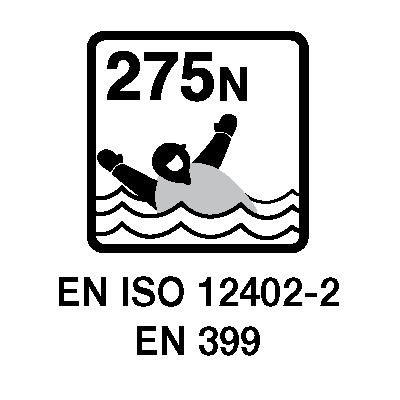
275N – Life Jacket
For swimmers and non-swimmers. A high-performance life jacket for offshore and extreme conditions when maximum buoyancy is needed or where heavy clothing or tools are worn. 275N life jackets give the best assurance of safety from drowning to people who are not capable of helping themselves. 275N life jackets cannot be guaranteed to self-right an unconscious person wearing heavy clothing or tools, although in most cases, this will be expected. 275N life jackets offer 275 Newtons of flotation.
USCG Approved US Standards
It would be way too simple to leave it at that. We need more standards. The Yanks can comply with the United States Coast Guard (USCG) Standards. Let’s look at these USCG standards further.
TYPE I PFD
A TYPE I PFD, also referred to as an off-shore life jacket, provides maximum buoyancy. It is efficient in all (open) rough or remote waters where rescue may not be instantaneous. It is devised to self-right most unconscious persons. TYPE I comes in two sizes: Adult size provides at least 22 pounds of buoyancy, and child size must provide at least 11 pounds of buoyancy.

TYPE II PFD
A TYPE II PFD, NEAR-SHORE BUOYANT VEST, is meant for calm, inland water or where there is a good chance of a speedy rescue. Type II will self-right some unconscious persons but is not guaranteed to do so. The self-righting is not as reliable as a TYPE I. An adult must provide a minimum of 15.5 pounds buoyancy, and a medium child must provide at least 11 pounds. Infant and small child size must provide at least 7 pounds of buoyancy.
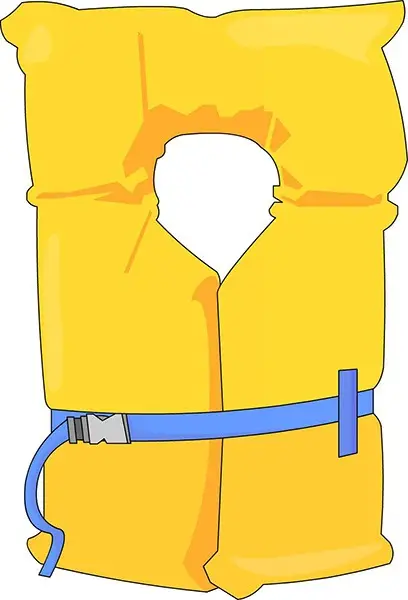
TYPE III PFD
A TYPE III PFD, also known as floating aid, is excellent for calm, inland water and where there is a good chance of rapid rescue. A type III PFD will not self-right unconscious people. The user may have to tilt their head back to avoid submerging their face. TYPE III has the same minimum buoyancy as TYPE II PFDs but is often purpose-designed for activities such as fishing or sport. Type III PFDs can, in some cases, automatically self-inflate when submerged in water.
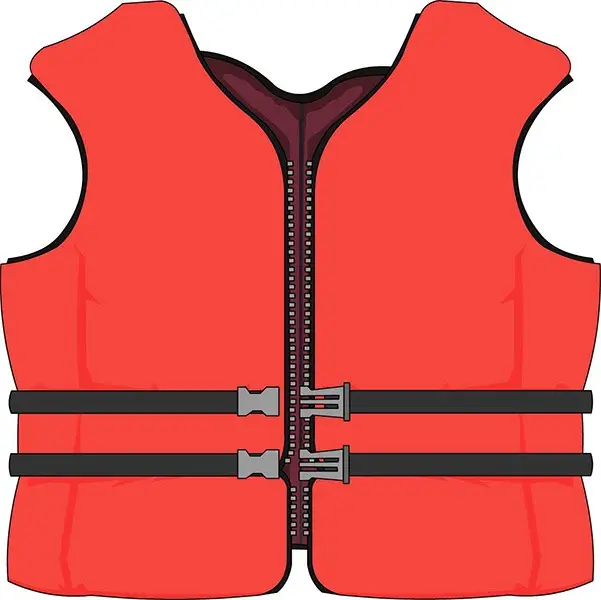
TYPE IV PFD
A Type IV PFD, or throwable device, is meant for calm, inland waters with heavy vessel traffic and rapid assistance but can also be used in open water. It is intended to be thrown to a person in the water and grasped and held by the user until saved. You can not wear a Type IV device. Type IV devices include items such as ring buoys and horseshoe buoys.
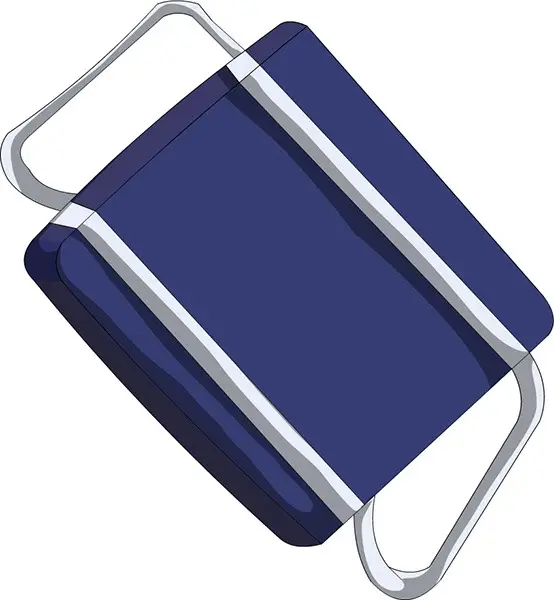
TYPE V PFD
TYPE V, or “special use devices,” are intended for special activities such as water skiing, windsurfing, canyoning, or kayaking. They can be used only in the specified conditions for which they were designed. They can be deck suits, work vests, board-sailing vests, etc…. They are the most wearable devices for comfort and memorability but offer minimum safety. TYPE V devices may have features such as auto-inflating when submerged.
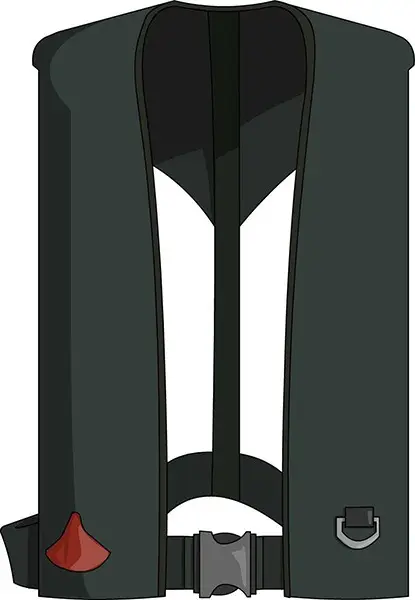
SOLAS lifejacket Standards
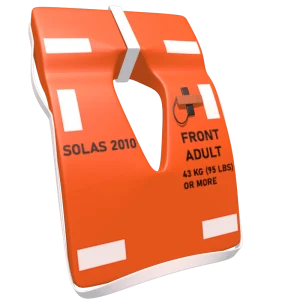 So, let’s not stop there. We can also find manufacturers of safety equipment referring to the International Convention for the Safety of Life at Sea (SOLAS). In general terms, it governs the Safety of Life at Sea for its signature countries, which include Australia.
So, let’s not stop there. We can also find manufacturers of safety equipment referring to the International Convention for the Safety of Life at Sea (SOLAS). In general terms, it governs the Safety of Life at Sea for its signature countries, which include Australia.
Life jackets are covered under Chapter III—Life-saving appliances and arrangements, including requirements for lifeboats, rescue boats, and life jackets according to the type of ship. The specific technical requirements are given in the International Life-Saving Appliance (LSA) Code.
The code was enacted through The Navigation Act 2012: Marine Order 25 (Equipment — lifesaving) 2014.
Okay, nice to know, but what does this look like on my boat, I hear you say.
Safety of Life at Sea (SOLAS) lifejackets meet extremely high-performance standards and are approved for use on all vessels. The SOLAS will self-right you very quickly so your face will be kept out of the water, even if you are knocked out. They come in two sizes: for persons 32 kg (70 lbs) and over or persons less than 32 kg. They are available in comfy and efficient inflatable models that can be automatically, manually or orally inflated. However, they also come in a bulky configuration, as you would see on a passenger ship, etc., to reduce cost.
Australian Standards (AS)
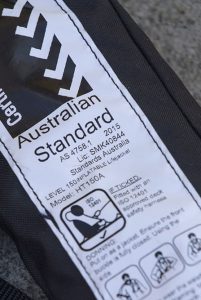 Lifejackets marketed in Australia must comply and display data about which Australian Standard (AS) they were manufactured to.
Lifejackets marketed in Australia must comply and display data about which Australian Standard (AS) they were manufactured to.
The latest standard is AS 4758, which has replaced AS 1512-1996, AS 1499-1996 and AS 2260-1996.
Lifejackets that meet these previous standards are no longer compliant and must be replaced where AS 4758 is set as the standard.
For example, most States and Territories refer to AS 4758 as the local minimum standard.
But wait, there is more…
For most Australians, State or Territory legislation will be the overarching code to adhere to. There is, of course, a lot of overlap, and you will find that the local rules refer to a standard discussed above. However, this may differ from state to state.
Familiarise yourselves with your local rules, which you can find here:
- Queensland – Maritime Safety Queensland
- New South Wales – Roads and Maritime
- Victoria – Maritime Safety Victoria
- South Australia – Boat and Marine Safety
- Western Australia – Department of Transport
- Tasmania – Maritime and Safety Tasmania
- Northern Territory – Marine Safety
- ACT (really?) – Access Canberra
Inflatable Life Jackets
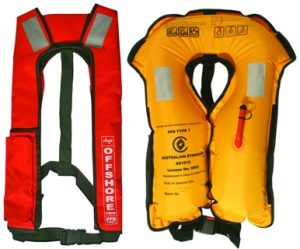 Most sailors prefer inflatable life jackets because they are highly compact, which increases their mobility around their vessel. Older style and often cheaper non-inflatable life jackets are cumbersome and may not be worn at all.
Most sailors prefer inflatable life jackets because they are highly compact, which increases their mobility around their vessel. Older style and often cheaper non-inflatable life jackets are cumbersome and may not be worn at all.
Inflatable life jackets can be classified as “AUTO” or “MANUAL”. Both have their pros and cons. Inflatable life jackets have the advantage of self-inflating when in contact with water. This means that an unconscious sailor has a better opportunity to survive as there is no need to pull the rip-cord to initiate inflation manually.
On the other hand, I have seen many automatic inflation life jackets inflate spontaneously on deck in heavy weather (at $30 a pop). They are also more expensive to service as there are more moving parts.
Harness or non-harness?
 Most coastal, offshore, and ocean life jackets have a built-in harness. The harness secures you to your yacht via a lifeline or tether and jack lines to avoid a MOB situation. Harnesses come in different types. Some have a sewn-in loop from strapping, whereas others have a more robust system with stainless steel rings.
Most coastal, offshore, and ocean life jackets have a built-in harness. The harness secures you to your yacht via a lifeline or tether and jack lines to avoid a MOB situation. Harnesses come in different types. Some have a sewn-in loop from strapping, whereas others have a more robust system with stainless steel rings.
Quality life jackets often have the anchor point in the centre of the jacket, whereas economy brands often have the anchor point just off-centre.
Accessories
Quality life jackets are often supplied with additional accessories. More expensive brands and 275N life jackets frequently have these accessories as standard, whereas cheaper brands offer accessories as additional extras.
Accessories may include:
- Lights – for better visibility at night
- Whistle – for attracting attention
- Spray-hood – for protecting against saltwater spray
- Leg strap – for better fit and stability
- Integrated AIS MOB1 unit – for increasing survivability
Travel Overseas
One more thing… Most jurisdictions have rules and regulations that govern vessel safety. However, there is little to worry about for recreational yachties exploring the world’s oceans. In almost all circumstances, most foreign countries will allow you to apply your local rules.
If you are from Australia, these rules are normally far more stringent than those of the country you are visiting. Nevertheless, please ensure your lifejackets comply, are in good working order, and are serviced regularly.
Happy and safe sailing…
Author
-
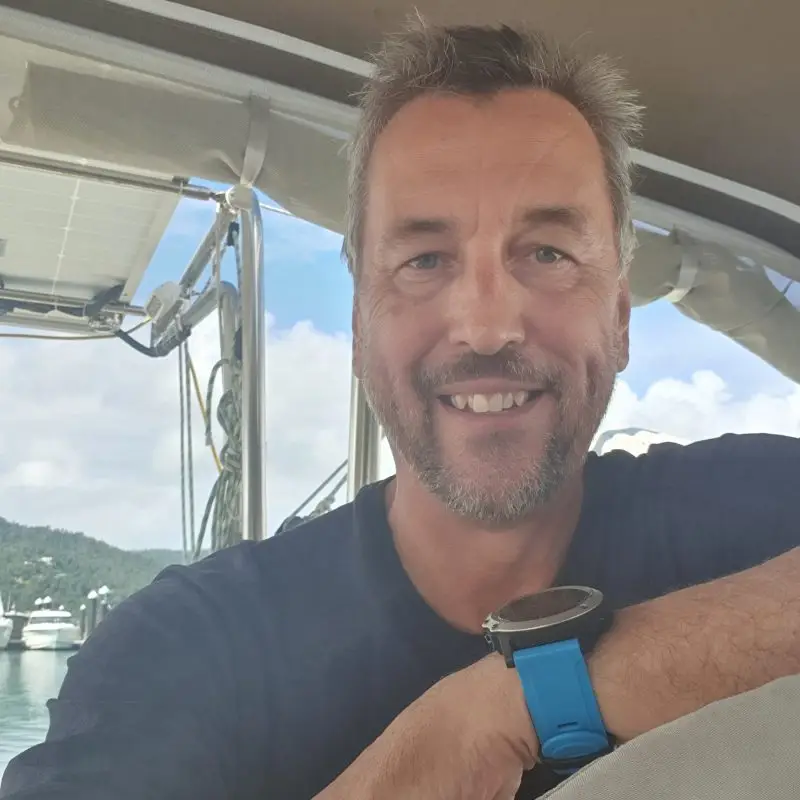
Rene is a keelboat instructor and sailing coach in the Mandurah area WA. He is also the author of several books about sailing including "The Book of Maritime Idioms" and "Renaming your boat".
View all posts

